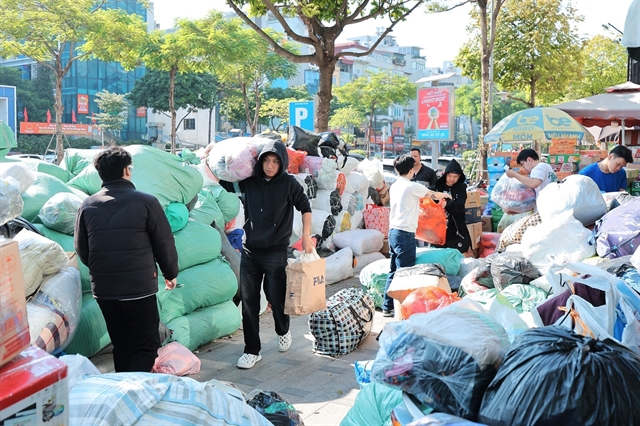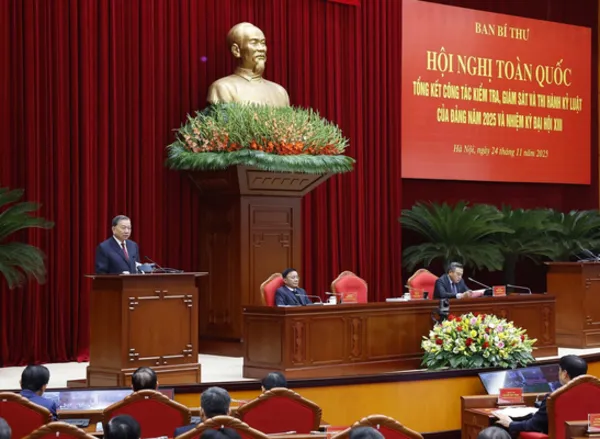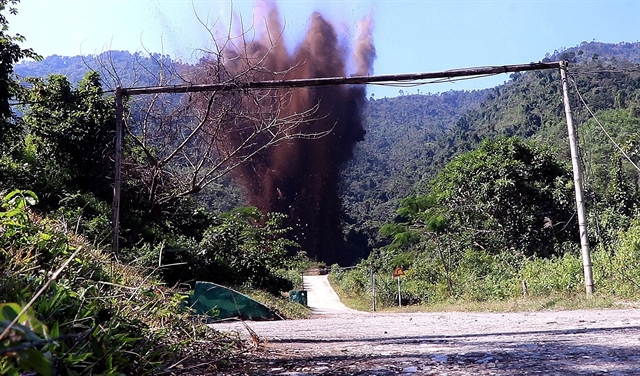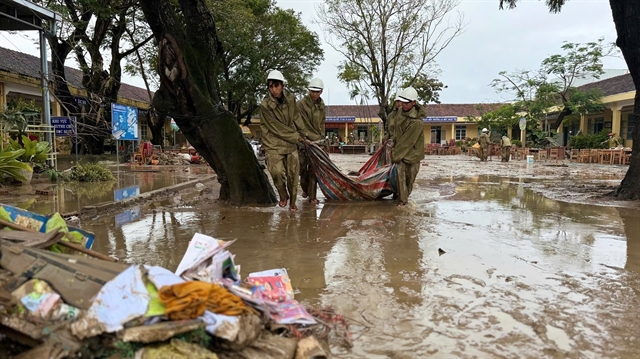 Society
Society

Public spaces are a key measure of urban green growth and sustainable development. With increasing urbanisation, Việt Nam’s cities have paid more and more attention to developing public spaces – but they still face a lot of challenges.
 |
| Children play in a pedestrian area around Hoàn Kiếm Lake in Hà Nội. The area is a popular public space in the capital city. — VNA/VNS Photo Danh Lam |
HÀ NỘI — Public spaces are a key measure of urban green growth and sustainable development. With increasing urbanisation, Việt Nam’s cities have paid more and more attention to developing public spaces – but they still face a lot of challenges.
In 2015, Việt Nam and 192 other United Nations member countries adopted the document “Transforming our world: the 2030 Agenda for Sustainable Development,” with its 17 goals and 169 targets.
The 11th goal on sustainable cities and communities requires its adopters to ensure universal access to green, safe and user-friendly public spaces for all citizens, particularly children, elderly people and people with disabilities by 2030.
According to the United Nations Human Settlement Programme (UN Habitat), public spaces are sites which are accessible and enjoyable by all without a profit motive. They take on various spatial forms, including parks, streets, sidewalks, markets and playgrounds. Good public spaces enhance community cohesion and promote health, happiness and well-being for all citizens.
Trần Ngọc Hùng, chairman of the Việt Nam Federation of Civil Engineering Association, spoke at a conference yesterday titled “Public spaces towards urban green growth and sustainable development.” Hùng said countries that developed urban public spaces in line with socio-economic development saw much improved living conditions.
In Việt Nam, public space development has been given more attention in urban planning in recent years, Hùng said.
Projects on parks, trees, markets, playgrounds, cleaning polluted rivers and upgrading urban drainage have been implemented in cities around the country.
Projects that violated public spaces have been cancelled, he said, pointing to a restaurant project in Hà Nội’s Thống Nhất Park as an example. Housing projects in Đà Nẵng’s Sơn Trà Penisula and projects that threatened to close the roads to beaches in Đà Nẵng were other notable instances.
“The development of public spaces in urban areas in Việt Nam faces challenges,” Hùng said, noting that there were still shortcomings in planning, implementing and granting construction licences.
For example, cities removed offices, factories and coach stations from city centres to make room for public works. These prime locations were given to housing projects which increase population density and pressure on existing infrastructure such as transportation systems, schools and hospitals.
Nguyễn Hồng Hạnh, director of the Institute of Construction and Urban Economics, said: “What factor shapes a city? It is public space, not private space.”
“Public space will create a foundation for community activities, strengthen cohesion and create an identity for the city with its own natural, historical and cultural factors,” she said.
According to “World Urbanization Prospects: The 2014 Revision,” written by the United Nations Department of Economic and Social Affairs/Population Division, about 54 per cent of the world’s population lives in urban areas, a proportion that is expected to increase to 66 per cent by 2050. In 1950, only 30 per cent of the population lived in cities.
In Việt Nam, the rate of urbanisation increased from 19.6 per cent with 629 urban areas in 1999 to about 37.5 per cent with 813 urban areas in 2017. The size, structure and appearance of the county’s urban areas have changed. Public spaces played an important role in improving quality of life and health in cities, making urban areas more attractive, healthier and more livable.
However, Hạnh said that during urbanisation, existing public spaces had been reduced, and their functions were changed or even disappeared.
In newly developed urban areas, public spaces were often planned but not implemented, meaning Việt Nam’s cities faced more shortages of public spaces.
Daniel Kristie from KTH Royal Institute of Technology – a university in Stockholm, Sweden – said rapid urbanisation presented challenges for the planning and management of cities including housing deficits, congestion, urban sprawl, overwhelmed infrastructure, underemployment and unemployment, crime, inequality and land shortages.
She said public spaces were important to cities because of their essential economic, social and environmental benefits.
“The economic interactions of a city are dependent on a well-connected, well-functioning public space system,” she said. “To the extent this system is degraded or non-existent, the city’s economy will under-perform.”
“Well-designed streetscapes can increase walking and public transit use and help to reduce vehicular traffic congestion,” she said, adding that a degraded street system would contribute to increased automobile travel, resulting in greater congestion, infrastructure costs and other negative impacts. — VNS




